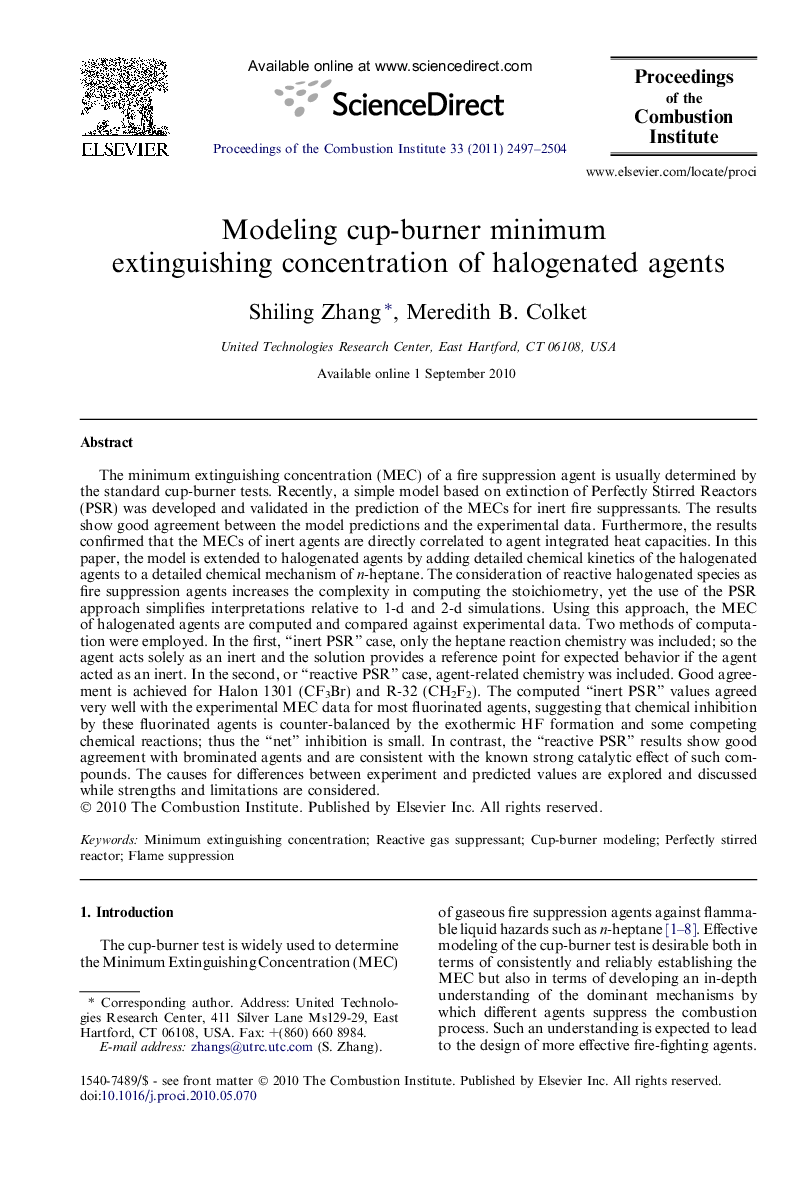| کد مقاله | کد نشریه | سال انتشار | مقاله انگلیسی | نسخه تمام متن |
|---|---|---|---|---|
| 240705 | 1427924 | 2011 | 8 صفحه PDF | دانلود رایگان |

The minimum extinguishing concentration (MEC) of a fire suppression agent is usually determined by the standard cup-burner tests. Recently, a simple model based on extinction of Perfectly Stirred Reactors (PSR) was developed and validated in the prediction of the MECs for inert fire suppressants. The results show good agreement between the model predictions and the experimental data. Furthermore, the results confirmed that the MECs of inert agents are directly correlated to agent integrated heat capacities. In this paper, the model is extended to halogenated agents by adding detailed chemical kinetics of the halogenated agents to a detailed chemical mechanism of n-heptane. The consideration of reactive halogenated species as fire suppression agents increases the complexity in computing the stoichiometry, yet the use of the PSR approach simplifies interpretations relative to 1-d and 2-d simulations. Using this approach, the MEC of halogenated agents are computed and compared against experimental data. Two methods of computation were employed. In the first, “inert PSR” case, only the heptane reaction chemistry was included; so the agent acts solely as an inert and the solution provides a reference point for expected behavior if the agent acted as an inert. In the second, or “reactive PSR” case, agent-related chemistry was included. Good agreement is achieved for Halon 1301 (CF3Br) and R-32 (CH2F2). The computed “inert PSR” values agreed very well with the experimental MEC data for most fluorinated agents, suggesting that chemical inhibition by these fluorinated agents is counter-balanced by the exothermic HF formation and some competing chemical reactions; thus the “net” inhibition is small. In contrast, the “reactive PSR” results show good agreement with brominated agents and are consistent with the known strong catalytic effect of such compounds. The causes for differences between experiment and predicted values are explored and discussed while strengths and limitations are considered.
Journal: Proceedings of the Combustion Institute - Volume 33, Issue 2, 2011, Pages 2497–2504